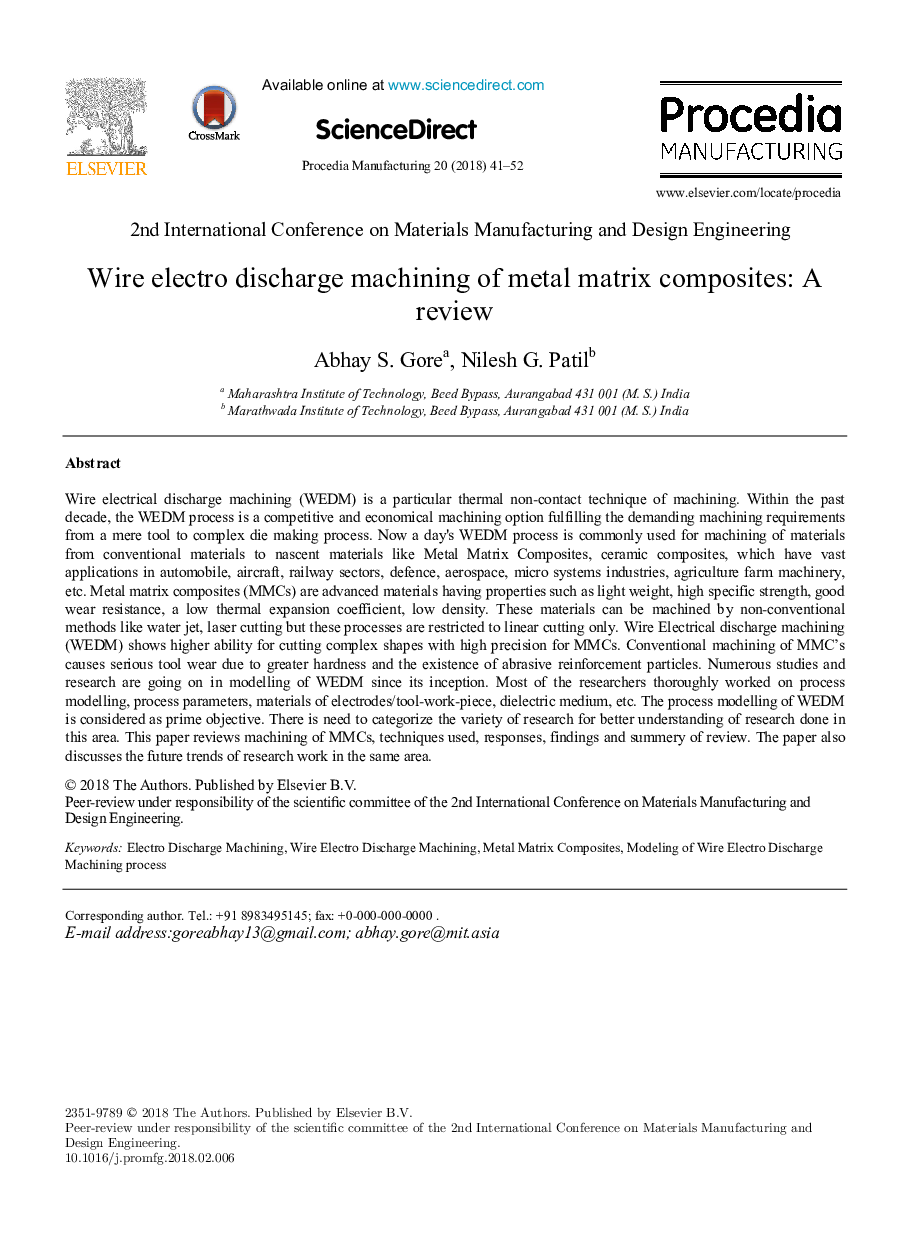| Article ID | Journal | Published Year | Pages | File Type |
|---|---|---|---|---|
| 7545240 | Procedia Manufacturing | 2018 | 12 Pages |
Abstract
Wire electrical discharge machining (WEDM) is a particular thermal non-contact technique of machining. Within the past decade, the WEDM process is a competitive and economical machining option fulfilling the demanding machining requirements from a mere tool to complex die making process. Now a day's WEDM process is commonly used for machining of materials from conventional materials to nascent materials like Metal Matrix Composites, ceramic composites, which have vast applications in automobile, aircraft, railway sectors, defence, aerospace, micro systems industries, agriculture farm machinery, etc. Metal matrix composites (MMCs) are advanced materials having properties such as light weight, high specific strength, good wear resistance, a low thermal expansion coefficient, low density. These materials can be machined by non-conventional methods like water jet, laser cutting but these processes are restricted to linear cutting only. Wire Electrical discharge machining (WEDM) shows higher ability for cutting complex shapes with high precision for MMCs. Conventional machining of MMC's causes serious tool wear due to greater hardness and the existence of abrasive reinforcement particles. Numerous studies and research are going on in modelling of WEDM since its inception. Most of the researchers thoroughly worked on process modelling, process parameters, materials of electrodes/tool-work-piece, dielectric medium, etc. The process modelling of WEDM is considered as prime objective. There is need to categorize the variety of research for better understanding of research done in this area. This paper reviews machining of MMCs, techniques used, responses, findings and summery of review. The paper also discusses the future trends of research work in the same area.
Related Topics
Physical Sciences and Engineering
Engineering
Industrial and Manufacturing Engineering
Authors
Abhay S. Gore, Nilesh G. Patil,
